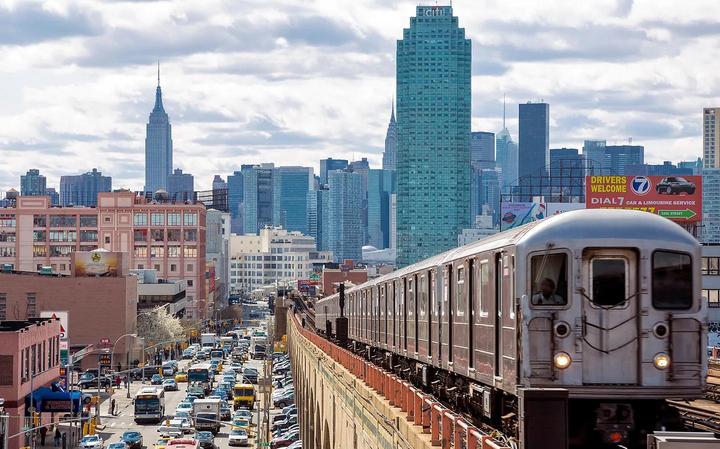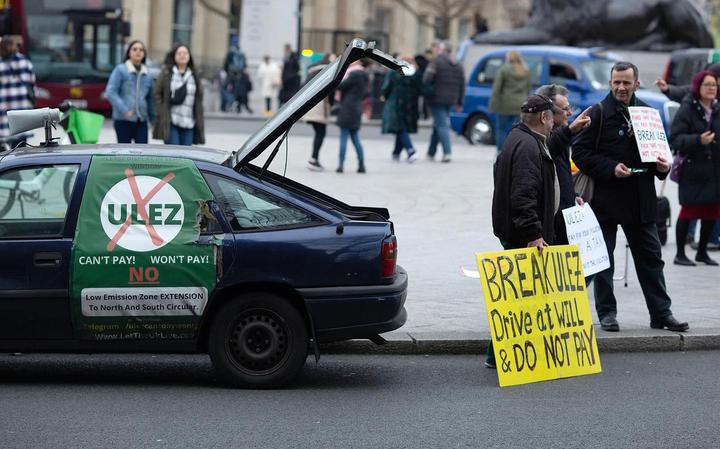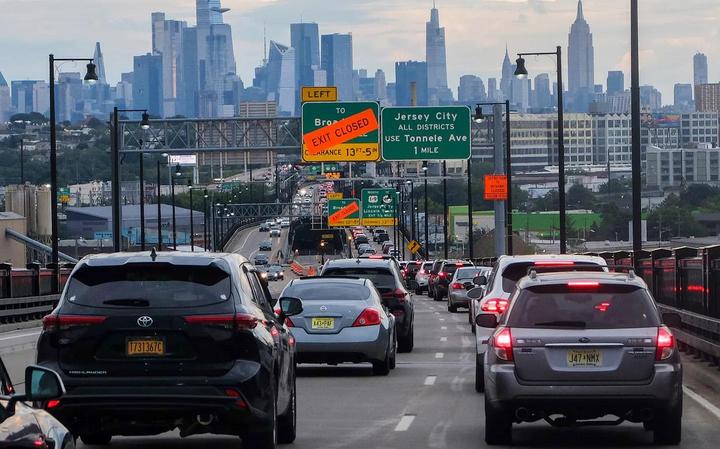From London to New York: Can quitting cars be popular?

Cities around the world reveal surprising truths about getting the public on board with cutting car-use.
“There is a war against cars in America,” a popular right-wing YouTube channel declared in 2017. The short film argued that tighter emissions standards made gas-powered cars more costly, and were part of a wider push to get people out of their individual vehicles and onto public transportation. “So much for the freedom of the open road,” the video lamented.
The views raised in the video were not new, or limited to the US. Accusations of a “war” had been circulating in the UK 15 years previously, as London prepared to introduce what was then the world’s largest congestion charge scheme, requiring drivers to pay for city-centre journeys. More recently, the city’s expansion of its Ultra-Low Emission Zone (or Ulez), which also charges cars that don’t meet certain emissions standards, has seen “Blade Runner” protesters tear down enforcement cameras. In the Belgian city Ghent, the deputy mayor received death threats in the wake of a 2017 plan to discourage short journeys by car.
Despite the ongoing pushback, cities around the world are continuing efforts to reduce traffic and improve air quality by encouraging drivers to switch from polluting cars to greener transport. Paris has a target to ban gas-powered cars by 2030, citing the need to tackle climate change. And, later in 2024, New York is set to conduct a first-in-nation car-reduction experiment : the launch of a long-delayed congestion charge on journeys below Manhattan’s 60th Street.
The moment before you do something is the most precarious political moment of all, because of all the fearmongering- Doug Gordon
New York City’s decision to finally go ahead with a congestion pricing plan comes after decades of blocks, both at state and national level. The initiative aims to reduce city-centre traffic by 15-20%, and to raise billions for its struggling subway system in the process. But in America’s land of the freeway – where cars have long symbolised independence and the romance of the road is part of the collective imagination – can schemes to tackle excessive car use ever gain widespread support?
The need for change in US urban centres is quite literally in the air. Tail-pipe emissions are akin to “wildfires that are happening on our own streets”, said New York’s governor Kathy Hochul in a press conference celebrating the congestion charge’s federal approval. Working hours lost sitting in traffic equate to around $20bn [£15.8bn] a year, she added; “a complete waste”.
Moreover, reforms elsewhere suggest that, despite initial resistance, car reduction plans steadily gain public acceptance in the long run. When the city of Ljubljana in Slovenia pedestrianised its city centre in 2007, opposition was considerable, with residents fearing restricted access to their homes – yet a little over decade later, roughly 90% said they were against reintroducing cars.
Why the early opposition? People struggle to weigh potential losses against gains. So suggests a concept in behavioural psychology known as prospect theory, with a disproportionate aversion to loss encouraging a bias towards the status quo.
This bias, in turn, can make implementing change tricky – as Birgitta Gatersleben, professor of environmental psychology at the University of Surrey, discovered when she conducted research in Guildford in the UK. “We found local businesses were very against pedestrianising the town centre,” she recalls. “They were worried they would lose customers – even though we had lots of evidence that if you pedestrianise high streets you get more.”
Numerous other cities, from Boston to Oregon, are now considering following suit. The former has proposed a mobility pricing commission to explore options including congestion pricing, and the latter is already testing a more extensive system of vehicle fees based on miles travelled (VMT). “It’s a really exciting time in the history of New York – and it’s exciting for the country too,” says Slevin.
Urban policy consultant Diana Lind has even suggested that this national-first for America could help mark the start of a wider shift away from gas-powered cars. “Congestion pricing is bound to influence other cities that are trying to figure out how to support public transit and promote more sustainable mobility options, like walking and biking,” she says.
When it became clear that New York was pursuing congestion pricing in 2019, Lind notes, Philadelphia started to think about the possibility as well. And as the plan made headlines again in 2023, cities like Los Angeles started thinking about how it could apply there too. “Cities look to each other for best practices, and if New York’s programme is successful, other mayors will undoubtedly start thinking about ways to implement something similar in theirs.”
One thing we can be sure of is that those mayors will have a close eye on New York’s scheme to see, among other things, if the Goodwin curve will hold true once again.


